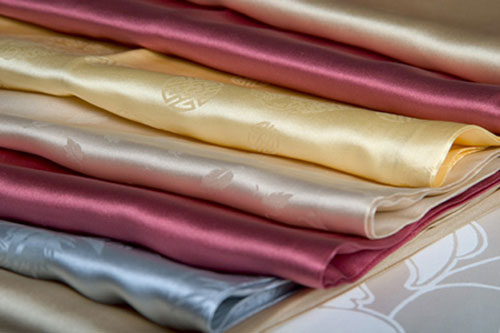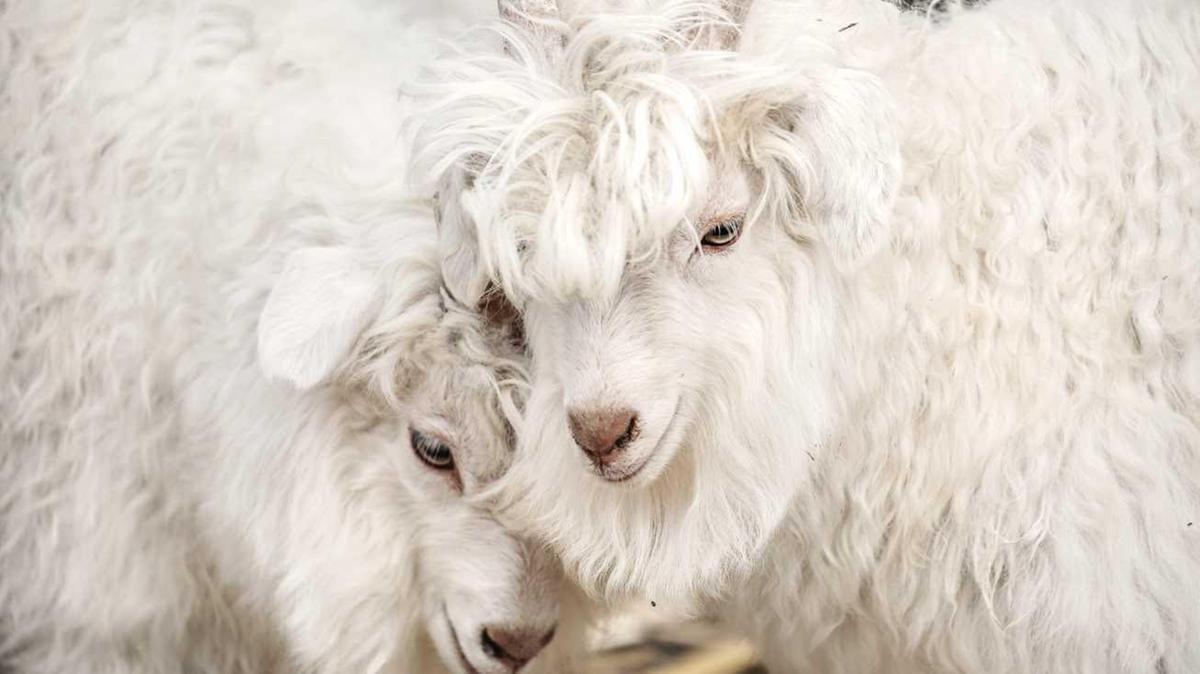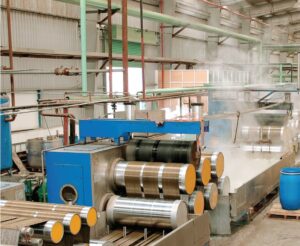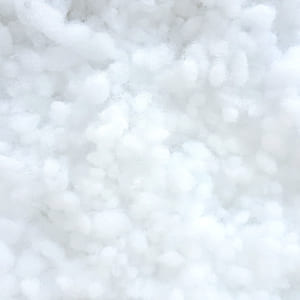What is silk?
Silk is a protein fiber spun by silkworms and is a renewable resource. Silk is also biodegradable. For these reasons, we consider silk a sustainable fiber. However, chemicals are used to produce conventional silk, so we will always consider organic silk to be a better option.
Because conventional silk production kills the silkworm, animal rights advocates prefer “Peace Silk”, Tussah, Ahimsa silks which allow the moth to evacuate the cocoon before it is boiled to produce silk.
Silk was originally grown uniquely in China from around 2,700 BC, according to Chinese tradition. So prized was it that production techniques were kept secret upon pain of death for anyone caught passing knowledge to foreigners. Knowledge and cultivation eventually spread, first to India and Japan, then Persia, and finally to Europe in the sixth century AD. Ancient luxury
Silk was one of China’s chief exports, traded for other goods across networks spanning Asia, Arabia, Africa, and Europe. Silk trading peaked from 130 BC under the Han dynasty until around 1453 AD when the Ottoman Empire boycotted trade with the West.
Although widely used, the term ‘Silk Road’ is a misnomer. There was no single East–West route but rather networks across land and sea. The name is also relatively recent, coined by a German geologist Ferdinand von Richthofen in the mid-nineteenth century.
Other types of silk exist. Tussar silk is produced by wild silkworms that feed on plants other than mulberry and has a rich texture. Eri Silk comes from domesticated silkworms fed on castor plants. The cocoon does not have a continuous filament so these can be extracted without killing the worm.
‘Ahimsa’ or ‘peace’ silk is specifically made without killing the silkworm. The butterfly emerges from the cocoon thus breaking the filament into smaller pieces, producing a less smooth thread. Silk noil is made from the waste short fibers from the cocoons used in conventional reeling processes and is also less smooth.
High-value market
By 2021, the silk market is projected to reach $16.94 billion.
Silk is a small but highly lucrative niche, representing less than 0.2 percent of the global textile fiber market. By 2021, the silk market is projected to reach $16.94 billion. A unit price for raw silk is roughly 20 times that of raw cotton.
China is the world’s largest silk producer, six times larger than the second-biggest producer, India. Uzbekistan, Thailand, and Brazil make up the other top five silk-producing nations. These five produce more than 99 percent of the world’s silk although sericulture is practiced in more than 60 countries.
China’s silk rearing and reeling industries are large-scale and highly mechanized. This may explain China’s 1-million workforce compared with India’s record 79 million, who are employed in rural, ‘cottage’ industries where reeling takes place alongside farming.
Social impact under scrutiny
The International Sericulture Commission estimates that 60 percent of sericulture income flows back to farmers, creating a strong money flow from urban to rural areas. Women comprise an estimated 60 percent of the sericulture and silk industry workforce1. Some sericulture is part of rural poverty alleviation projects although it is unclear how much of this silk enters mainstream fashion supply chains.
Women comprise an estimated 60 percent of the sericulture and silk industry workforce. – INSERCO
The Indian Silk Board estimates that about 57 percent of the gross value of silk fabrics flows back to its cocoon growers. However other studies show that silk cocoon farmers in some locations, such as Kashmir, are still on very low incomes. There is also evidence that the key stages of India’s silk production rely on bonded child labor. Human Rights Watch estimated in 2003 that at least 350,000 children were producing silk thread and weaving saris in some of India’s main silk-producing regions2.
The children were working 12-hour days, up to seven days a week, exposed to physical and verbal abuse as well as injury, infection, and disease. Some began work from the age of five, earning a paltry amount that is usually set against family debts. Child labor is also found in silk cocoon production in Uzbekistan, according to the US State Department.
Mixed environmental record
Silk has a mixed environmental impact. It is a natural fiber and will biodegrade. Mulberry trees that sustain most silkworms require few pesticides or fertilizers, can be grown organically, and require less water than cotton.
However, the Higg Materials Sustainability Index (MSI), which ranks the environmental impact of fiber from raw fiber production to fabric, ranks silk higher than almost all other fibers, mainly due to its global warming potential and use of fossil fuels chiefly in the reeling and processing stages. The Made-By Environmental Benchmark for Fibres does not classify silk.
Silk rearing – raising the silkworms until they form cocoons – can also adversely affect workers’ health. A 2011 study of sericulture farmers in Kashmir, India found the majority of silk-rearers there suffered from eye irritation, injuries, back pain, allergies, respiratory problems, and headaches. Child labor is also found in silk fabric production in India and silk cocoon production in Uzbekistan, according to the US State Department.
Alternatives to conventionally produced silk include organic silk. The ICEA environmental watchdog has developed a standard for Organic Sericulture and Mariculture to bridge the gap between the existing European organic farming standards and sericulture practices. The Global Organic Textile Standard (GOTS) can also be used for silk. It covers the processing of the fiber into yarn and fabric rather than raw fiber production.
Basic information about Cashmere
Cashmere fiber comes from cashmere goat hairs. More than 80% of the world’s cashmere is produced in China and Mongolia.
Goats eat 10% of their body weight every day while alpacas eat 1% or 2%. Four years are necessary for a goat to grow enough hair to produce just 1 sweater.
The main environmental issue stemming from cashmere is because goats pull the grass out by the roots when they eat instead of cutting it. As a result, the grass does not grow back, leading to land desertification. This, combined with an overpopulation of goats, results in a real environmental threat.
Mongolia is now suffering the consequences of this overgrazing through cashmere goats. The breeding of more than 20 million cashmere goats is the principal cause of the massive desertification threatening 90% of the surface of the country.
It is stronger and warmer than wool, dyes easily, and can be blended with other fibers. Herders either clip or comb out the fibers during the spring when the goats molt. Traders and processors buy this raw cashmere for shipping to mills, where it is ‘scoured’ (washed), and sorted for quality and color. It is then ‘de-haired’ – removing as much coarse outer hair as possible without damaging the fine Underdown that is then spun and woven into high-grade cashmere.
Around 6,500 tonnes of pure cashmere are produced globally, from a raw yield of around 15,000 to 20,000 tonnes (compare this to the 1.1 million tonnes of clean raw sheep’s wool produced globally). It takes a full year of growth in four goats to make one sweater – which is why cashmere is so expensive.
Market changes threaten raw source
Four countries dominate raw cashmere exports: China produces 70 percent of global output, Outer Mongolia produces 15 to 20 percent, and Iran and Afghanistan combined 10 to 15 percent. Key markets for cashmere apparel are the US, Europe (UK and Italy), Japan, and increasingly, China2.
Cashmere products – typically knitwear (sweaters, scarves, accessories) – account for around €4 billion of the €60 billion global luxury apparel market3. China is renowned for producing the finest white cashmere that fetches the highest prices. Mongolian output is less white, but still prized for length and fine quality. Iranian and Afghan cashmere tends to be darker, coarser, and shorter.
High-street retailers are making cashmere more casual and affordable, driven in part by the athleisure trend. This and the rising Chinese market are pushing up demand for raw sources of cashmere. In response, Mongolian and Chinese herds have expanded dramatically.
Thirty years ago, cashmere goats comprised 19 percent of Mongolian livestock – today they are 60 percent. The country’s 1 million herders now predominantly farm cashmere goats rather than sheep, cattle, yak, and camels. Yet Mongolia’s natural grasslands – more than 70 percent of the country’s landmass – cannot sustain the rising numbers. Goats graze very close to the plant root and their sharp hooves damage topsoil and root structures. Already over-grazing has seriously degraded 70 percent of the grasslands, to the point that some resemble deserts5. Other native large mammals are said to be struggling to survive as overgrazing damages their habitats6.
As the grass perishes, the goats can become undernourished. Their fiber quality falls as does the yield and price, which herders offset by buying more goats. It is a vicious circle that is weakening Mongolia’s cashmere supply chain while wrecking its natural environment.
Championing quality over quantity
To stem a decline in quality, there are moves within the luxury sector to protect cashmere sources. This includes protecting prices of cashmere during downturns so suppliers are not driven to over-stock herds. Research is underway into breeds with higher yields of quality fiber to reduce the need for larger herds and into designing more climate-resilient production systems.
China – the world’s biggest cashmere exporter – is experiencing similar problems and is investing in improved goat productivity. In 2013 the government began restricting farmers’ acreage to prevent over-grazing7.
Sustainable cashmere initiatives and standards
Mongolia depends more on environmentalist-led action, such as the Sustainable Fibre Alliance. It educates herders on more sustainable herding practices and pastureland management. The Swiss-backed ‘Green Gold project’ works to prevent overgrazing, and believes better land management could reverse 90 percent of the degradation in Mongolia.
In January 2020 the Trade by Aid Foundation launched The Good Cashmere Standard which covers the Five Freedoms of animal welfare as well as the economic, social, and ecological conditions experienced by cashmere farmers.
As we can see in the related section, conventional cashmere has very significant consequences for the environment.
The good news is that there are a few sustainable cashmere options that address these environmental problems and give us the possibility to buy cashmere without a guilty conscience:
Recycled cashmere and cashmere alternatives
Italy is developing an alternative to virgin cashmere – Re.VerSo – made from pre-consumer factory left-overs of wool and cashmere. It comes from a fully transparent, certified, and traceable system involving five of Italy’s leading textile producers, and has caught the attention of designers keen to lower their environmental impact.
An entirely alternative source could be Litrax Natural Bamboo. This fiber is likened to cashmere in feel but derives from bamboo stalks that are processed mechanically using environmentally friendly enzymes, unlike conventional bamboo-based viscose.
Source from Commonobjective. co






